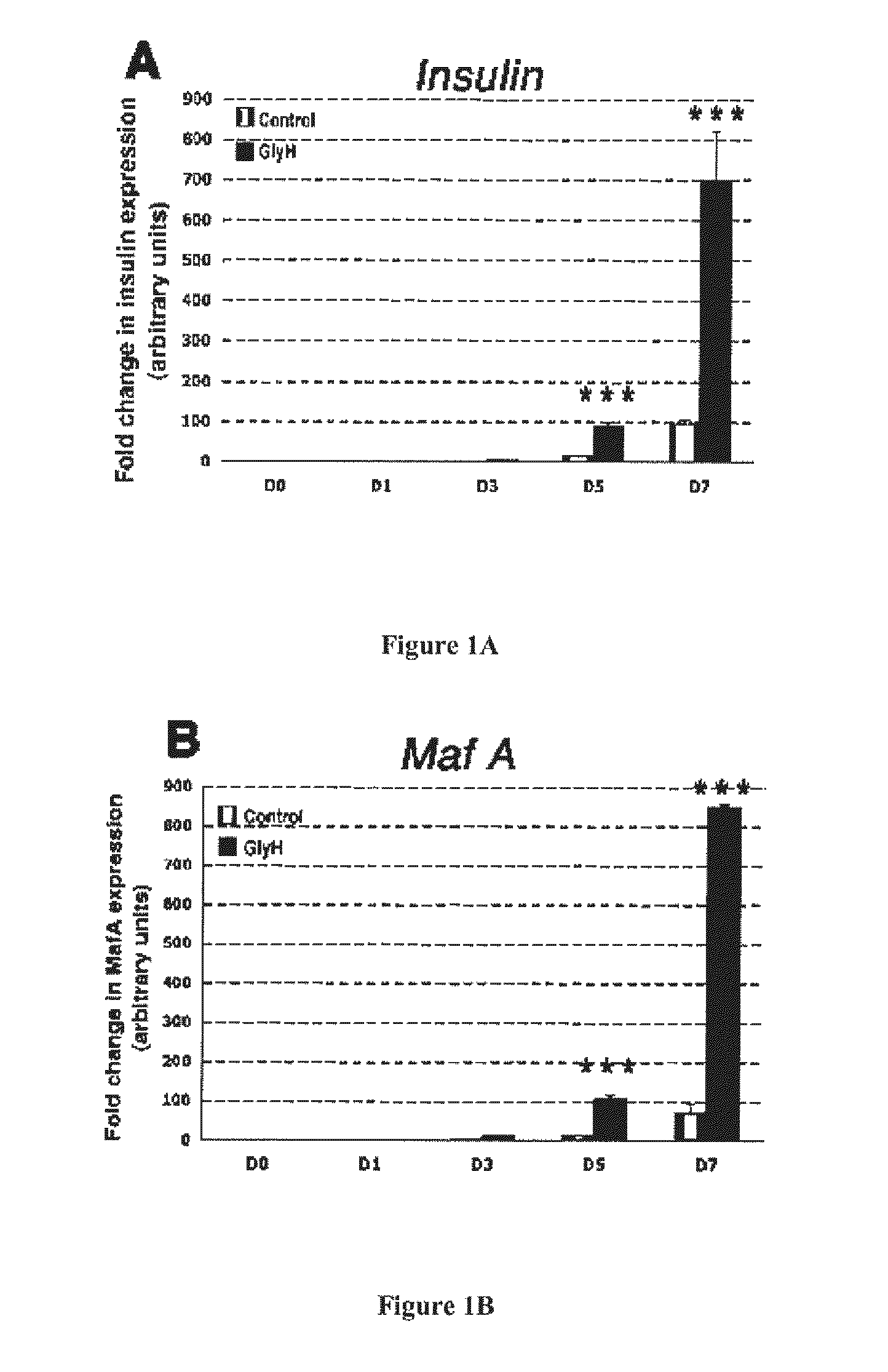Methods and pharmaceutical compositions for the treatment of disorders of glucose homeostasis
a technology of homeostasis and glucose, applied in the field of cftr inhibitors, can solve the problems of impaired glucose-dependent insulin secretion, lack of organ donors, membrane depolarization, etc., and achieve the effects of increasing the number of pancreatic endocrine cells, inhibiting the expression and/or activity of said genes, and increasing the cell mass
- Summary
- Abstract
- Description
- Claims
- Application Information
AI Technical Summary
Benefits of technology
Problems solved by technology
Method used
Image
Examples
example 1
Material & Methods
[0361]Animals and Pancreatic Dissection:
[0362]Pregnant Wistar rats were purchased from the Janvier Breeding centre (CERJ, LeGenet, France). Cftr-knockout (Cftr− / −) and wild-type (Cftr+ / +) embryos were obtained from the progeny of heterozygous-heterozygous for the S489X mutation (Snouwaert et al. 1992) matings (CDTA, Orléans, France). The first day postcoitum was taken as embryonic day (E)0.5. Pregnant rats were killed with CO2 asphyxiation and pregnant mice by cervical dislocation according to guidelines issued by the French Animal Care Committee. Dorsal pancreatic buds from E13.5 rat and E12.5 mice embryos were dissected as described previously (Miralles et al. 1998). Briefly, the stomach, pancreas and a small portion of the intestine were dissected together, and then the pancreas primordium was isolated.
[0363]Organ Culture:
[0364]Dorsal pancreatic rudiments were cultured on 0.45 μm filters (Millipore) at the air-medium interface in a 35 mm sterile Petri dishes con...
example 2
[0409]Our previous results showed that GlyH was able to expand insulin-positive cell number in vitro.
[0410]To evaluate its effects in vivo, GlyH 101 was administrated to a E12.5 pregnant mice for 5 days at 10 mg / kg / day (according to Yang et al. 2008) in a saline DMSO solution (500 ml / injection) by intraperitoneal injection two times a day. The embryos were harvested at E18.5 and the pancreas fixed for histological immunostaining. The surface of insulin staining was quantified and normalized to the whole pancreatic tissue. As shown on FIG. 2, in vivo, GlyH 101 treatment increased beta cell mass.
PUM
| Property | Measurement | Unit |
|---|---|---|
| Mass | aaaaa | aaaaa |
| Gene expression profile | aaaaa | aaaaa |
| Biodegradability | aaaaa | aaaaa |
Abstract
Description
Claims
Application Information
 Login to View More
Login to View More - R&D
- Intellectual Property
- Life Sciences
- Materials
- Tech Scout
- Unparalleled Data Quality
- Higher Quality Content
- 60% Fewer Hallucinations
Browse by: Latest US Patents, China's latest patents, Technical Efficacy Thesaurus, Application Domain, Technology Topic, Popular Technical Reports.
© 2025 PatSnap. All rights reserved.Legal|Privacy policy|Modern Slavery Act Transparency Statement|Sitemap|About US| Contact US: help@patsnap.com



